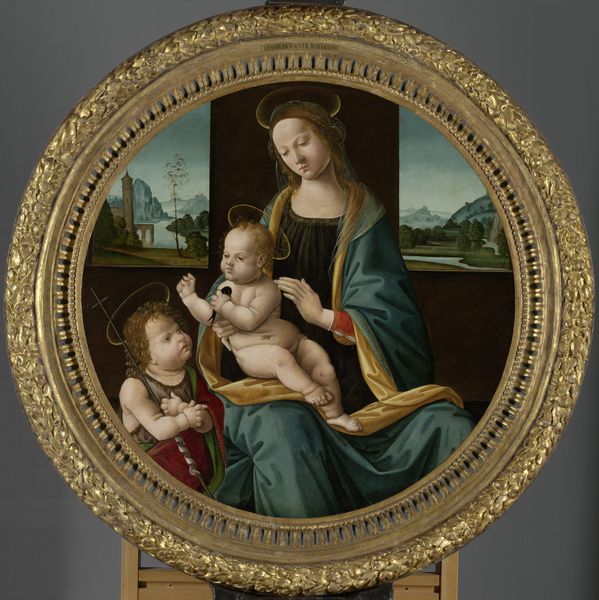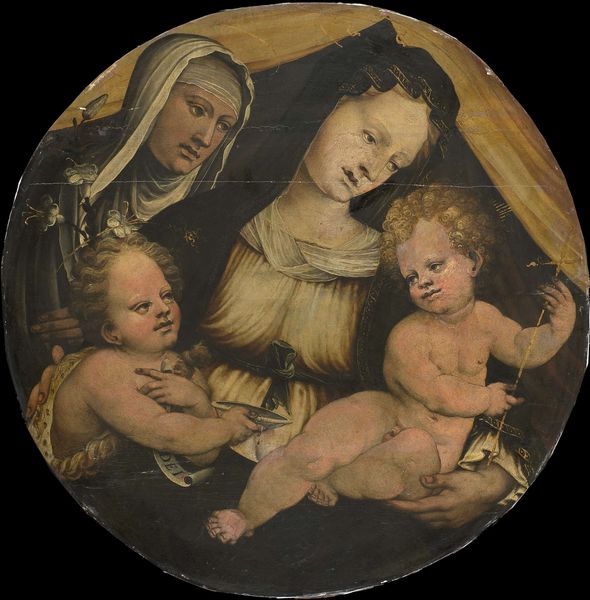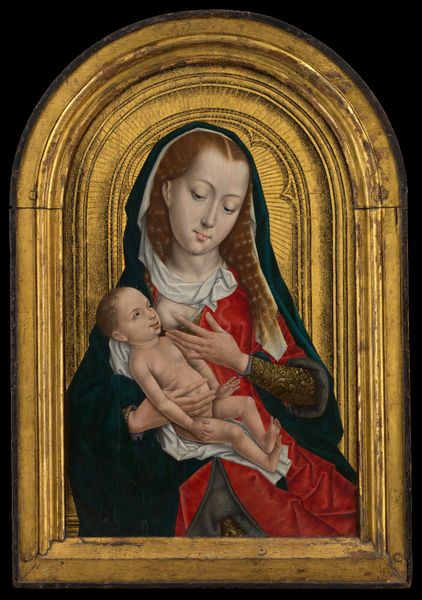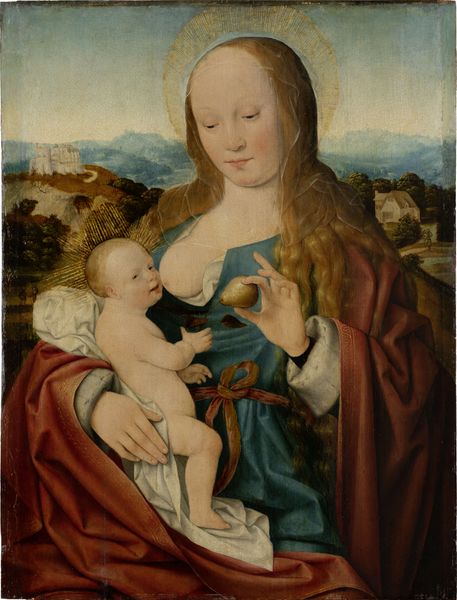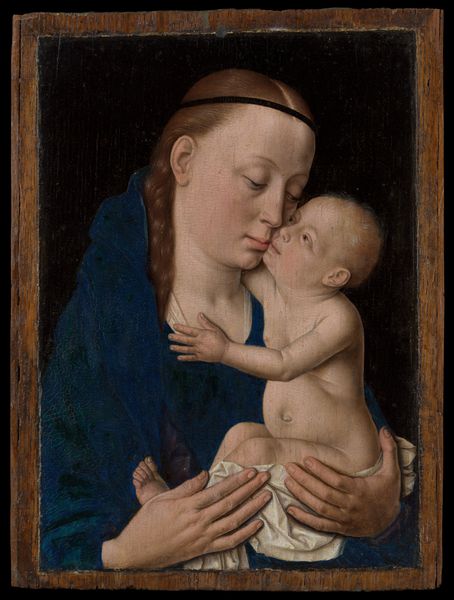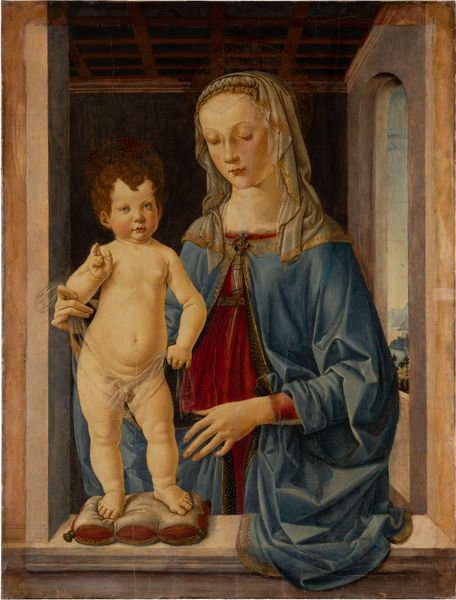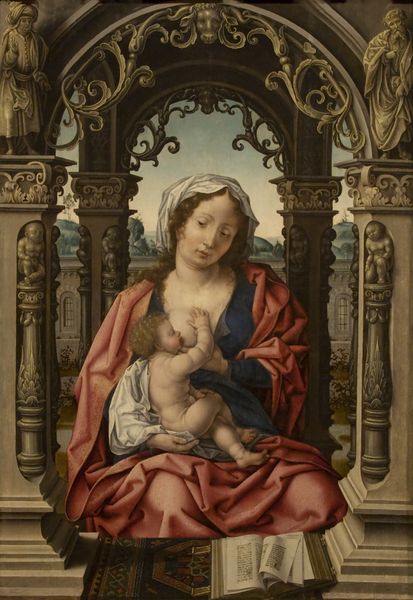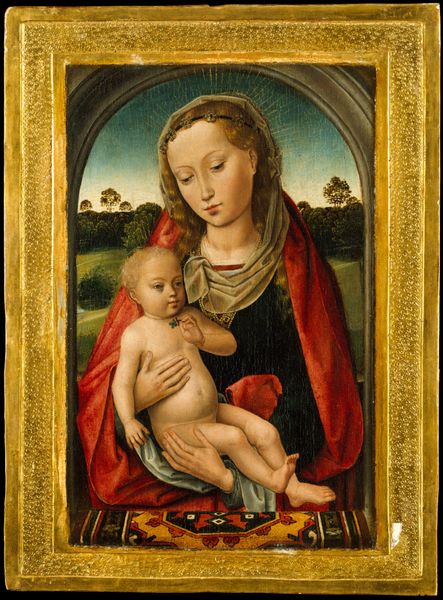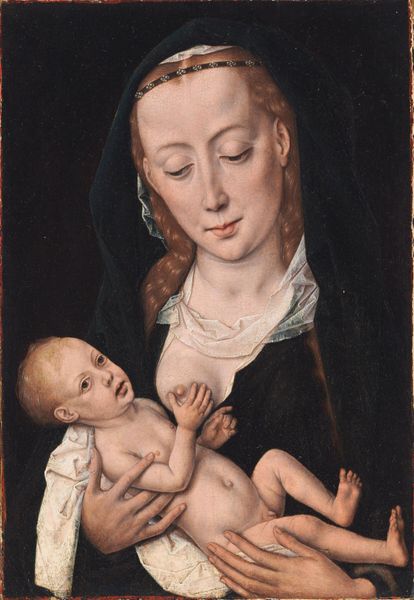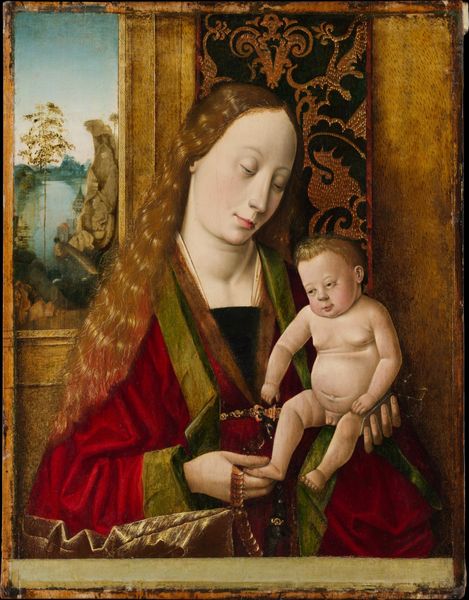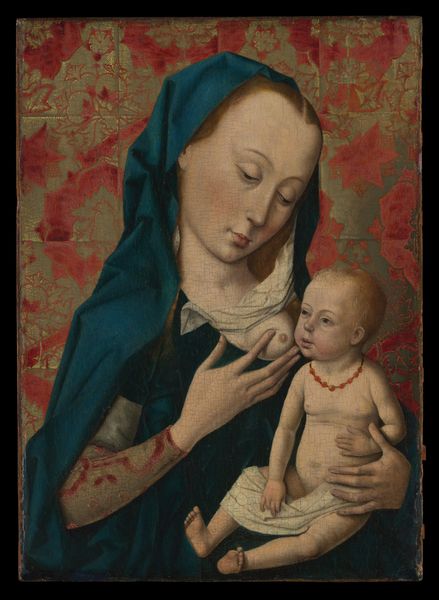
painting, oil-paint
#
portrait
#
painting
#
oil-paint
#
figuration
#
madonna
#
oil painting
#
child
#
italian-renaissance
#
miniature
Dimensions: Overall, with integral frame, diameter 9 3/4 in. (24.8 cm); painted surface diameter 6 7/8 in. (17.5 cm)
Copyright: Public Domain
Curator: Here we have Hans Memling's "Virgin and Child," an oil on panel painting dating back to around 1475-1480. It's currently located at the Metropolitan Museum of Art. Editor: My first impression? It feels incredibly intimate. The Madonna's gaze is so tender, and the composition, contained within that tondo, adds to the feeling of closeness and warmth. The lighting directs the gaze to her gentle expression and to the baby. Curator: Indeed. Consider how this work reflects the evolving role of women, particularly motherhood, in Renaissance society. We see here an image deeply connected to representations of idealised femininity and the religious power invested in maternal figures. Editor: You can tell the composition follows classical principles; observe how the circular frame functions almost like a halo, framing this sacred and archetypal dyad with the landscape quietly receding in the background, reinforcing an internal and sheltered space. I wonder if that spatial relationship represents the human's place in nature or the woman's place in society. Curator: That brings us to questions surrounding female agency and its limitations. Is Mary an active participant or a passive vessel? Considering historical constraints on women's bodies and roles, and what about the act of breastfeeding itself being heavily scrutinized and moralized? It all complicates readings of tenderness, demanding a complex understanding. Editor: Looking at the artist’s handling of paint and light, notice how Memling has rendered Mary's pale skin and the subtle details of the fabric to achieve such realistic luminosity, and how the surface texture creates such visual appeal. Curator: By examining patronage, devotional practices, and shifting social structures, we can understand how "Virgin and Child" actively participated in and helped construct social ideas around gender, faith, and identity in the 15th century. Editor: Focusing just on its compositional elements for a moment has shown me what an elegant work this is and just how deliberately constructed the painter's perspective had to be. Curator: Considering it now through the lenses of socio-cultural and religious critique certainly adds to its importance for me.
Comments
No comments
Be the first to comment and join the conversation on the ultimate creative platform.
